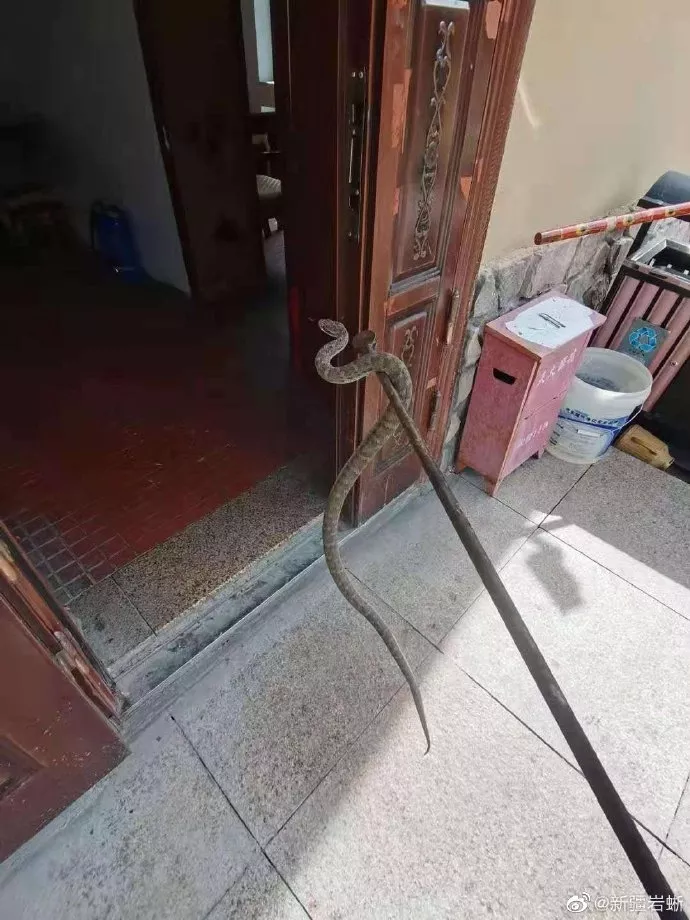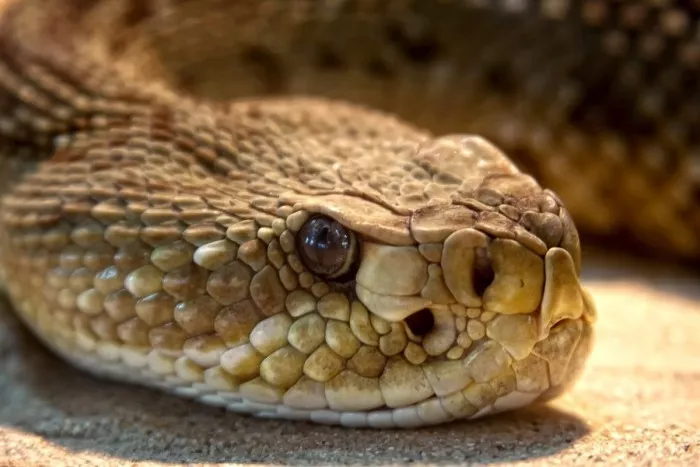When it comes to snakes, many people are afraid, especially poisonous snakes. We all know that once bitten by a poisonous snake, there will be poisoning and even life-threatening. As for poisonous snakes, many people are curious: since poisonous snakes are so poisonous, will poisonous snakes with poisonous snakes be poisoned to death? Now that everyone has asked questions sincerely, I'll tell you generously (it's not boring at all...)

What happens when a poisonous snake bites itself
Under normal circumstances, poisonous snakes bite themselves without poisoning symptoms.
*The venom of a poisonous snake exists in a gap similar to a straw in its fangs *, which is effectively controlled by muscles.
*The production of toxins is very time-consuming and labor-consuming, so poisonous snakes will not easily release toxins *. This deadly weapon will be activated only when they are in self-protection and prey.
Under normal circumstances, poisonous snakes will not bite themselves. Even if they accidentally bite themselves in the process of predation, they generally will not release toxins, but dry bite, so there will only be skin trauma.
In addition, in the process of natural evolution, most poisonous snakes also produce corresponding natural resistance factors. They exist in the serum of poisonous snakes and are substances that can produce immunity to their own toxins**
Therefore, even if the poisonous snake bites itself, due to its own snake venom antibody, the toxin can not play an effective role, and naturally there will be no symptoms of poisoning.
Of course, there are also some special cases. When the poisonous snake bites itself, the dose of toxin entering the blood is too large, and the antibody in the body is not enough to resist the spread of these toxins, poisoning symptoms will appear.
In addition, not all poisonous snakes have evolved antibodies to protect themselves, such as American fish eating Agkistrodon halys, Egyptian beaked Cobra and so on. Without the protection of antibodies, they will still be poisoned after being injected with their own venom.
The poisonous snake was bitten by another poisonous snake
The venoms of poisonous snakes can be divided into neurotoxins, blood circulation toxins and mixed toxins, but no matter what type of toxins, they need to enter the blood circulation to play a role.
Whether a poisonous snake will be poisoned after being bitten by other poisonous snakes is mainly related to whether the poisonous snake itself has antibodies and the injected toxin dose.
Poisonous snakes generally have certain immunity to the same kind of poisonous snakes, and even some poisonous snakes have resistance to the toxins of different kinds of poisonous snakes.
When a poisonous snake is bitten by another poisonous snake, the toxin will quickly enter the blood circulation system. At this time, if the bitten snake does not have the antibody to the toxin in its body, the toxin will poison the blood in contact, which will quickly coagulate the blood and cause poisoning symptoms
Even for poisonous snakes with antibodies, poisoning symptoms will appear when the dose of toxin injected into the outside world is too large.
For example, the venomous snake with a smaller individual will die because it cannot completely curb the spread of the toxin after being bitten by the venomous snake with a larger individual because the amount of antibody contained in the blood is limited.
When the dose of the injected toxin is small, it can be well inhibited by its own antibodies, and there will be no symptoms of poisoning.
Which snake is the most poisonous
As mentioned above, the venoms of poisonous snakes can be divided into neurotoxins, blood circulation toxins and mixed toxins.
Scholars generally consider how to evaluate the toxicity of these snake venoms from the aspects of attack time, pain intensity, amount of bleeding, average death time, mortality, lethal dose and so on.
Blood circulation toxins widely exist in Viper venoms of viper family and cobra family. The common domestic bamboo leaf green, Agkistrodon acutus, Agkistrodon Baimei and Agkistrodon protospearhead are secreted by these toxins.
There are many kinds of circulating toxins with complex components, mainly including hemorrhagic toxins, coagulation toxins and cardiac toxins. This kind of venom is characterized by short attack time, strong pain and large amount of bleeding, but the toxicity of the venom is not strong.
Neurotoxins are mainly found in the genus Cyclops of cobra family, such as golden ring snake and silver ring snake, as well as in inland Taipan snake and bell sea snake mentioned above.
The toxic hair is slow, the amount of bleeding is small, and the initial pain is not obvious, but it is very dangerous after the full attack. The bitten may have the symptoms of muscle trembling, foaming, dysphagia, dyspnea and finally lying on the ground. The mortality is very high without serum.
Mixed toxin, as the name suggests, contains the characteristics of the above two toxins at the same time. Cobra and King Cobra of cobra family secrete this venom.
The bitten will have different diseases at the same time, that is, when the toxin attack, the nerve is damaged, and the blood circulation toxin causes harm at the same time.
This kind of venom is not strong, but snakes that secrete this toxin, such as king cobra, inject a large amount of venom, which makes the venom play faster and react violently.
At present, it is recognized that the most toxic snake venom should be the inland Taipan snake with the strongest toxicity of terrestrial snakes and the neurotoxin secreted by Belcher sea snake with the strongest toxicity of marine snakes
The lethal dose of venom (0020.1mg / kg) secreted by inland snakes can be reported as the lethal result**
Its detoxification amount can reach 125mg ~ 400mg each time, which is enough to kill 250000 mice or 100 adults. Its toxicity is 300 times stronger than that of rattlesnake, about 20 times that of King Cobra
What if you are accidentally bitten by a snake in the wild
If you are accidentally bitten by a snake outdoors, try to keep calm. When people are in a state of tension and excitement, their heartbeat will speed up, so the blood circulation will also speed up. If bitten by a poisonous snake, it will accelerate the diffusion of the toxin and promote the absorption of the toxin.
Then, quickly judge whether it is bitten by a poisonous snake according to the shape of the snake venom and the traces of the bitten part. Generally, two rows of fine serrated shallow small tooth marks can be seen at the bitten part of the poisonous snake, while two larger tooth marks will be left at the bitten part of the poisonous snake.
In addition, gauze, clothes, rope or cane can be used to ligate more than one joint above the wound (near the heart). For example, if the wound is at the ankle, you can choose to ligate at the lower leg.
The bandage should not be too tight. The tightness and looseness should be able to reach into one finger. The arterial blood can pass through and the venous blood cannot return. Loosen the binding every 15-20 minutes for about 1-2 minutes.
If there are poisonous teeth on the wound, take them out with pliers, knife or other sharp objects. If possible, disinfect them with fire before use. After taking out the foreign objects, wash the wound with spring water, clear water or mineral water and salt water. Do not use alcoholic beverages to prevent the rapid diffusion of toxins.
Of course, the most important thing is to call the doctor before all the above actions, so as not to miss the best treatment time.
